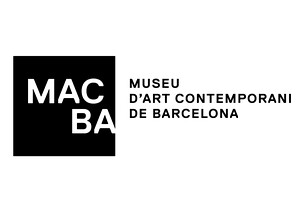June 17, 2016–June 30, 2017
85 works by 50 artists from around the world dealing with experience, time and conflict from 1959 to the present
A museum collection is not only one of its main working areas, but also what configures that museum’s identity. With a 20-year history and more than 5,000 works, the MACBA Collection wants to be open to the present and reflect it in a manner that responds to the changes in today’s world. Built as a network around different discourses, on this occasion MACBA Collection 31 offers some artistic itineraries through three main areas: experience, time and conflict. The exhibition includes 85 works by 50 artists of various generations from around the world, representing a chronological period of over five decades, from 1959 to 2014.
MACBA Collection 31
Experience: “…make something which experiences, reacts to its environment, changes, is nonstable…” proclaims Hans Haacke. He takes the General System Theory by Ludwig von Bertalanffy, which defines living beings as open systems, as the basis for Condensation Cube (1965). This work, included in the exhibition, involves viewers in their physical condition, since their presence alters the temperature differential between the inside and outside of a cube, thus modifying the drops of water that form on the interior walls.
Experimenting with the natural elements and processes, sensory perception and the will to render visible physical changes and phenomena that normally go unnoticed by the human eye have often been the focus of attention in art, as can be seen in this section. The great multisensory installation by Cildo Meireles, exhibited at the Museum for the first time, opens the exhibition. Entrevendo (1970/1994), invites the viewer to live a synesthetic experience by entering a tubular, funnel-shaped structure in which hot air circulates with two ice cubes in the mouth. Accompanying the work in this experiential journey are Àngels Ribé’s interventions, Muntadas’s early works and the Conceptual art of Piero Manzoni and Art & Language, among others.
Time: “I do not work with figures, but with ideas and forms. Together with the participants I transform a space and time. […] Every performance is unique,” says Joan Jonas. Sensory experimentation implies working with the body in a form of art based on action and movement, with time as a decisive factor. Performance became a testing ground for artists such as Jordi Benito, Fina Miralles, Francesc Abad, Esther Ferrer and Àngels Ribé, who documented their actions photographically. Joan Jonas was one of the first to film her performances, followed by Vito Acconci, Dan Graham and Gordon Matta-Clark. A few years later, Babette Mangolte incorporated movement as prime artistic material, while the installations of David Lamelas and Hans-Peter Feldmann, and the explorations of Francis Alÿs, Frederic Amat and Martí Anson used time and duration as a field of research.
Conflict: “The state’s monopoly on violence is not in decline, it is simply changing its focus,” are the emphatic words of Andreas Siekmann. This last section includes some of the realities afflicting today’s world such as conflict, borders and migration. In the tower of the Meier building, the installation If You See Something… by Krzysztof Wodiczko offers a global picture of conflict through damning accounts of abuses of power. While Carlos Garaicoa, Marcel Broodthaers, Étienne Chambaud and Pere Noguera investigate the idea of walls and maps, Pedro G. Romero, León Ferrari and Alice Creischer recover forms of recent historical violence. Harun Farocki, in his film trilogy, highlights the irruption of military technology into civilian life. In a more physical manner, Mircea Cantor evokes the situation of the displaced, while Allan Sekula portrays the human community that, for a few days, occupied the streets of Seattle in a demonstration against capitalism. Each raises the urgent need to rethink the idea of conflict.
Art that deals with abuses of power in every social structure and the multiple forms of violence is very evident in this exhibition. Contemporary forms of labour and workers’ exploitation are the focus of attention for artists such as Étienne Chambaud, Eulàlia Grau, Joaquim Jordà, Octavi Comeron, Adrian Melis and the collectives Grup de Treball and Agustín Parejo School. Social violence forms the background of Aníbal Lopez’s work, while the effects in the public space of the power relations that arose in the 1990s are the subject of Andreas Siekmann’s installation, which closes this part of the exhibition.
MACBA Collection 31 aims to show that we are facing a global world that perpetuates forms of labour associated with inequality and geopolitical conflict. A world challenged by an artistic practice that no longer understands the position of art if not as a critical agent. With this exhibition we set out to emphasise the ability of art to delve into some of the cracks upon which the story of the present is built.
Digital Collection 31
In order to enrich the visit, we have updated the MACBA app with the contents of the new presentation of the Collection: audios, videos and texts to be consulted during the visit or to download later. For those at home, a virtual visit will be also available here.
Exhibition organised by MACBA and curated by Ferran Barenblit and Antònia M. Perelló.


